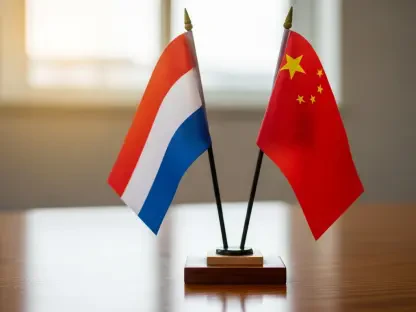Indonesia, the largest economy in Southeast Asia, has set an ambitious target for economic growth under the administration of President-elect Prabowo Subianto. Prabowo aims to achieve an 8 percent growth rate, a significant leap from recent figures. This bold objective has sparked widespread discussion among experts and stakeholders about its feasibility and the strategies required to make it a reality. As Indonesia navigates its way towards this economic milestone, various strategic measures and collaborative efforts will be essential to bolster its growth trajectory.
Government’s Optimism and Strategic Goals
The Indonesian government is notably optimistic about reaching the 8 percent economic growth target set for the upcoming years. According to Amalia Adininggar Widyasanti, Deputy for Economics at the Ministry of National Development Planning/Bappenas, the government plans to accelerate economic growth to between 8-8.3 percent by the third year of Prabowo’s term and maintain an impressive average of 7.7 percent over five years. This ambitious objective is part of the National Long-Term Development Plan (RJPN) Golden Indonesia 2045, which envisions a prosperous and equitable Indonesia by the centenary of its independence.
Central to the government’s strategy is a blend of short-term and long-term measures designed to invigorate the economy. In the short term, initiatives like the Free Nutritious Meal program are implemented to stimulate aggregate demand by promoting increased consumption of local products. Long-term plans are more extensive and focus heavily on industrialization as the key driver of economic growth. This includes the development of priority industries such as agribusiness, mining, marine resources, and creative sectors, all of which are critical to Indonesia’s sustained economic advancement.
Collaboration with the Private Sector
Experts have underscored the crucial role of collaboration between the government and the private sector in achieving the ambitious growth target. I Made Dana Tangkas, Chairman of the Indonesian Employers Association (Apindo), highlights the necessity of a cohesive partnership to drive economic development forward. He proposes focusing on five key industries that are foundational to the nation’s economy: manufacturing, trade, agriculture, mining, and construction, which collectively serve as the backbone of Indonesia’s economic structure.
One of the primary strategies in achieving this collaboration is the utilization of incentives and improved infrastructure to attract substantial investments. Another significant approach involves diversifying supply chains and enhancing human resource capabilities to ensure that Indonesian industries remain competitive on a global scale. Moreover, a strong emphasis on sustainability will not only enhance global competitiveness but also ensure long-term economic resilience, thus laying a robust foundation for future growth.
Revitalizing Core Industries
Revitalizing Indonesia’s core industries stands as a fundamental aspect of the broader economic strategy envisioned by the Prabowo administration. Hendri Saparini from the Center of Reform on Economics (CORE) asserts that Indonesia must avoid falling into the middle-income trap by making substantial leaps in industrial capacity. She advocates the creation of basic industries and comprehensive policies that effectively integrate upstream and downstream sectors, ensuring an inclusive development model that benefits all regions of the country.
The drive towards industrial revitalization involves efforts to build a robust industrial base supporting value-added activities and innovation, which are crucial for achieving sustainable economic growth. By fostering an environment that encourages the development of essential industries and their integration with other sectors, Indonesia aims to establish a dynamic economic landscape poised for continued growth and resilience against potential economic downturns.
The Pancasila Economic Approach
Hendri Saparini also advocates for the Pancasila economic approach, an economic model rooted in the principles of economic democracy and populism. This approach calls for broader participation in economic activities, aiming to reduce unemployment and provide equitable access to economic opportunities for all citizens. By empowering communities and small-to-medium enterprises, the goal is to foster an inclusive growth model that ensures wealth distribution is more equitable across the nation.
This inclusive economic framework is expected to create a more dynamic and diverse economy with contributions coming from various sectors and regions. Such a model not only fosters economic resilience but also ensures that the benefits of growth are felt by all layers of society, thereby creating a more stable and balanced economic environment capable of withstanding various challenges.
Enhancing Global Competitiveness
Indonesia, as the largest economy in Southeast Asia, is embarking on an ambitious journey under President-elect Prabowo Subianto. Prabowo has set a daring goal for the nation: achieving an 8 percent economic growth rate, a considerable increase from current statistics. This audacious target has stirred extensive discussion among economic experts and key stakeholders, focusing on its realism and the strategies necessary to attain it. To reach this lofty ambition, Indonesia will need to adopt various strategic measures and foster collaborative efforts that are aimed at bolstering its economic growth.
Detailed plans and policies will likely be required to support sectors such as infrastructure, manufacturing, and digital technology. Enhancing investment, improving business regulations, and promoting innovation will be critical. Additionally, fostering relationships with international partners could play a vital role in realizing this goal. As the country navigates through these challenges, the success of Prabowo’s vision will depend on effective governance, societal support, and sustainable practices to maintain long-term growth.









